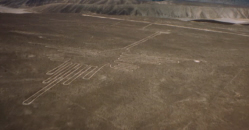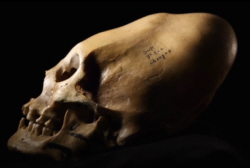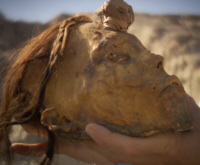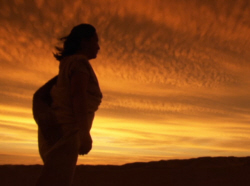Year Without Sunshine
Nazca People - South America
Andrew Marr’s History of the World - Word and Sword
Not all empires leave a legacy when they collapse. Around the rest of the world, other cultures were still trying to appease nature.
535 - 536 was known around the world as the year without sunshine. From Irish monks to historians in Bysantium and Antarctic ice cores the same story emerges of a catastrophic year of dark skies and crop failures.
All the mass spiritual movements in China, India and the Roman world could only shiver and endure, but it proved catastrophic to the Nazca culture on the Pacific coast of South America.

The Nazca were great engineers and artists but they also provide the ultimate reply to the lazy idea that native peoples are bound to have a wise and harmonious relationship with nature. The Nazca left behind these immense lines and pictures created between 200 and 600 A.D. the drawings range from hundreds to thousands of metres in length. Many can only be understood from the air as if they were drawn for gods to see.
Holy City of Kawachi
The Nazca left us a lot more than their lines. Those little hills you can see behind me were once pyramids surrounded by great plazas and dominated by one huge central pyramid, 30 metres high. This was the Nazca’s holy city of Kawachi. It must have been quite a sight. And not just the buildings.

Nazca priests were selected as infants and their skulls were shaped with boards and tightened bandages until they became bizarrely long and pointy. Their job was to buy off angry gods a form of social insurance paid in severed heads.
The victims were their own people and here is one. This is a young man, out here in a desert very little rots. Grisly, but all around the world it seems a good idea to kill people and offer them to the gods and by doing that try to control the rains or the earthquakes or whatever the trouble was. But there seems to have been a sudden increase in human sacrifice here and it seems to have happened because the Nazca were making a terrible mistake.
A fatal miscalculation

The key plant in the desert here was the huarango tree. Its roots plunge as much as 50 metres into the Earth, to find water - the key to life. Aqueducts, lined with boulders brought water from the mountains to these reservoirs. The water irrigated the crops and kept Kawachi alive. As the population grew they needed more food. huarango trees were torn down to make way for crops.
Big mistake, the Nazca didn’t realise that the Huarango tree was also the key to the desert ecosystem. It’s deep roots kept the soil and their world together.
For hundreds of years the Nazca kept offering up heads of people to the gods, cutting down the Huarango trees and maintaining their extraordinary underground water system and the water kept flowing and life was good. And then came bad news. From the sky. That fateful year without sunshine, 535, covered the world in a shroud.
The Nazca experienced an apocalyptic 30 years of rain, without the roots of the huarango trees the soil was washed away. Then the rains were followed by 30 years of drought. The earth was left hard and lifeless.

It’s been suggested that as the Nazca became more desperate they sacrificed more and more of their people and created more and more of their lines. But, none of it worked. The Nazca spent all of that time thinking about severed heads when all along it was the severed trees that really mattered.
The Nazca and vanished into the Andes Mountains taking their gods with them. History is littered with gods and ideas and civilisations which didn’t last. But, at just this time, another desert people arose whose beliefs would stand the test of time.
